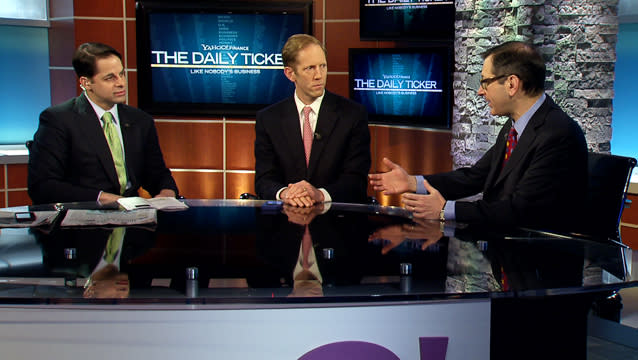Bubble in Safety Assets Forming: Seth Masters

The Dow (^DJI) and S&P 500 (^GSPC) closed at new record highs Tuesday, leaving both major market indexes up 15% year-to-date, outperforming most other asset classes. Investors clearly are favoring stocks over other asset classes.
Commodity prices are little changed (oil) or lower (gold). And 10-year Treasury yields, at 1.95%, are near where they started the year, though up sharply from the year’s 1.63% lows.
Related: Here's Why Stock Market Investors Should be Nervous
Within the stock market, investors are favoring high dividend-paying stocks. They have higher yields than Treasuries and are seen as safer investments than other stocks because of the cushion those dividends provide. But Seth Masters, chief investment officer of Bernstein Global Wealth Management, says those so-called safe dividend-paying stocks are more risky than ever.
“What [investors ] have been doing in the last few quarters is moving into parts of the stock market that are perceived to be safe, more defensive stocks like utilities, and in the process they have pushed prices up to unprecedented levels,” says Masters.
Related: There's More to This Market Rally Than Meets the Eye
The result: defensive stocks like utilities, consumer staples and telecoms are now trading almost 50% higher than historic norms, making them a lot less safe, according to Masters. “The perception of safety has driven prices up…[and] creating distortions in the market.”
The trailing P/E ratio of Dow Jones Utility index, for example, is just above 25 versus under 17 a year ago. “Normally utilities trade at a significant discount to the market P/E. Now they are at a very significant premium…[trading] at almost a 50% increment to the normal pricing of utilities,” says Masters.
But, says Masters, “The perceived safety that people think they’re will get is quite questionable.” He says utility stocks have risks including regulatory risk, leverage risk, are sensitive to energy costs and now, pricing risk given the premium. “I don’t think of that as safe.”
Related: Dow 20,000 by 2020, Beware “Safety Bubble”: Bernstein’s Seth Masters
So what stocks are relatively safe now? Masters says it’s those stocks that are not perceived as safe—more cyclical sectors or value stocks trading at a discount to the normal. The fundamentals of those “cheap” stocks are actually better now.
The Daily Ticker Presents: Generation I.O.U.
Yahoo! Finance, Yahoo! News and The Daily Ticker are teaming up to produce a special live streaming event on May 23 at 12:30 pm ET around the rising cost of college.
Are you burdened by student loan debt? Have you moved back home? Are you having trouble finding a job?
Tell us your story in 90 seconds or less and ask our experts a question. Upload your video to Flickr here. Or, send us an email at: thedailyticker@yahoo.com.
More from the Daily Ticker:
Sony Stock Soars As Hedge Funder Dan Loeb (Politely) Demands Change
Dow 20,000 by 2020, Beware “Safety Bubble”: Bernstein’s Seth Masters
U.S. Oil Production to Shock Global Energy Markets: IEA Report
Gold Prices 'Still Very Inflated': Talking Numbers' Brian Sullivan